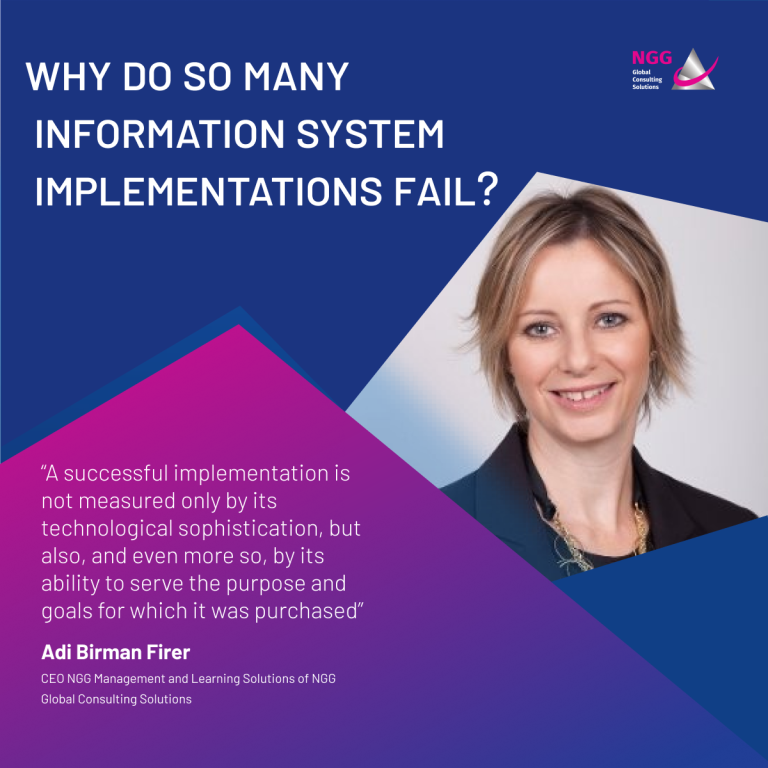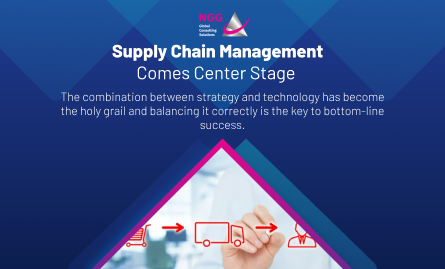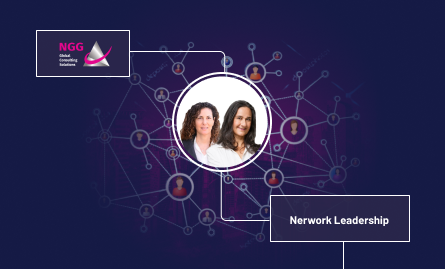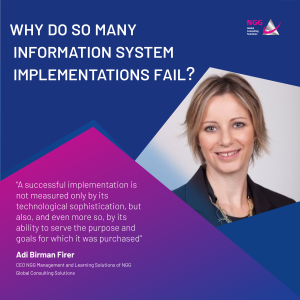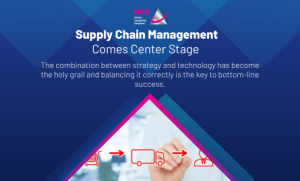What must organizations do in order to survive in a technologically evolving market? Rami Jaulus, NGG CEO, recommends that organizations follow 7 crucial principles
The rise of technology as a key aspect of our personal and professional lives compels companies to become more efficient, increase their performance, and rethink their current methods of operation. There’s a tangible fear of failing to adapt and becoming obsolete in the face of technological developments. Many still remember IBM, Blockbuster, and Kodak – once-successful companies who were tragically late to adapt to a dynamic market. The landscape is changing faster than ever. People of all ages and backgrounds are quick to adopt the latest technologies, and companies are realizing that they must adapt accordingly. Technology is everywhere, and it requires a complete organizational overhaul in order to adjust to the existing environment.
Organizations are affected in a number of ways:
1. Technology: Technology enables companies to do things they couldn’t do in the past and offers a whole new world of opportunities for consumers. Automation make entire jobs obsolete, but there’s more to it than that. Technology transforms work processes, business models, and worldviews. Disappearing jobs: Bank tellers, supermarket cashiers, travel agents, insurance agents, and other jobs are vanishing from the market or shifting in new directions.
2. Consumption habits: Consumers are discovering that they can still do the same things they’ve always done, but in completely new and exciting ways. Want to watch a movie? The ability to rent a movie and watch it at home has been there for years, but now we can watch any movie we want, anywhere and anytime, on any device. Want to go shopping? Long gone are the days when our only option was to leave the house and go to the store. Today we can order any product or service online.The shopping experience itself is transitioning. Digital stores offer a high-quality shopping experience and even incorporate virtual reality technologies to imitate physical shopping. At the same time, physical stores have evolved to offer a fully engrossing experience, while customers are charged for their purchases automatically via their digital accounts. As omni-channel consumers, we’ve developed new needs that must be met immediately and an expectation for smarter and more robust experiences.
3. Regulation: Late as usual, regulation is starting to catch up to consumers and is undergoing a similar transition. The holistic and thorough approach is replaced by immediacy and quickness of response. These phenomena are usually counterbalanced at a later stage, but the change we see today is so far-reaching that it’s hard to tell whether we can ever expect it to subside or if it is so powerful that it will only result in more and more rules and regulations, which is not always for the better.
These are just a few examples of areas that affect organizations and require them to rethink their methods.
Any organization – commercial, public, governmental, military, or otherwise – must follow these 7 principles:
1. Change management as a constant – Organizational agility: Change management is a lengthy process, yet so few organizations seem to adopt change management as part of their internal mechanisms. Things are changing faster than ever before, and this is just the beginning. The time to prepare is yesterday. Companies must be ready to grab change by the horns and turn it into an inseparable part of their organizational culture.
2. Always look for better ways of performing tasks, or eliminate them altogether: If something works, it’s probably outdated. If we don’t examine and optimize every aspect of every job, task, or process, then there’s probably someone out there who’s doing it better. Human nature follows a simple rule: if it ain’t broke, don’t fix it. It’s time to put that kind of thinking behind. If something works, then it’s bound to become obsolete soon enough, when someone else comes up with an even better solution.
3. Adopt a techno-strategic way of thinking: Historically, organizations followed a model that divided them into functions. Strategic thinking, for instance, was entrusted to the strategic unit, who was in charge of identifying emerging trends and deciding on appropriate courses of action. The technology unit, which in many organizations is still limited to basic IT.
The rise of technology and its influence on the traditional workplace has caused the technology unit’s role to expand from merely providing tech support to overseeing the entire arsenal of business technologies. At the same time, strategic units must become more technological.
Can the traditional model be of any use anymore, or do modern times call for a different type of thinking? Perhaps the answer is a unit that incorporates strategic thinking, business development, and business technologies?
4. Encourage and develop internal and external innovation skills: The tendency to do the same thing over and over without ever changing is dangerous, inefficient, and inadequate for our dynamic world. Besides, sometimes it’s the warehouse worker or security person that come up with the best ideas, unbeknownst to company leadership. What kind of organizational mechanism would make space for innovative and creative thinking and channel that thinking in a practical direction?
5. Continuous deconstruction of jobs and functions – consolidation and transition to technology: In every job there are aspects that can be transitioned to technology or outsourced to a specialist. It’s only a question of necessity and feasibility. These factors change over time, so it’s important to reexamine jobs and positions, deconstruct them, and reconstruct them in a way that is more economical.
6. Look for functions that can be diverted to self-service: Transitioning to technology also means diverting customer interactions to self-service platforms. One upside of self-service is that it can be used by the provider to encourage customer engagement. More and more customers prefer the freedom to browse, choose, and act at their leisure.

7. Sort your content and data and decide what’s public and what’s privileged: As organizational processes become more and more exposed, one question that arises is how to protect business knowledge.Before tackling the issue of knowledge protection, every organization must ask itself: What kind of business knowledge does the organization possess, as opposed to knowledge that is in public domain? Which information should be protected and which can be exposed? This will allow the organization to transition to technology more easily and release information that may encourage customers to purchase products or services.
Above all is the question of transformation management: This brings us back to the topic of change management as an organizational mechanism that is intrinsically bound to the organization’s course for development. Continuously adapting to external changes and becoming more efficient and agile are existential necessities. Organizations that fail to adapt lower their chances of surviving into the next decade.
Rami Jaulus, CEO of NGG, omni-channel strategy expert, leads cross-organizational transformation processes from traditional business models to omni-channel strategies in local and global companies.
For questions on organizational transformation and other subjects, contact Rami at info@nggconsult.com
